Laing is made of dried taro leaves cooked with pork belly, coconut milk, and chili peppers. It's easy to make and delivers big flavors. This classic Bicolano dish is creamy, spicy, and delicious with steamed rice!
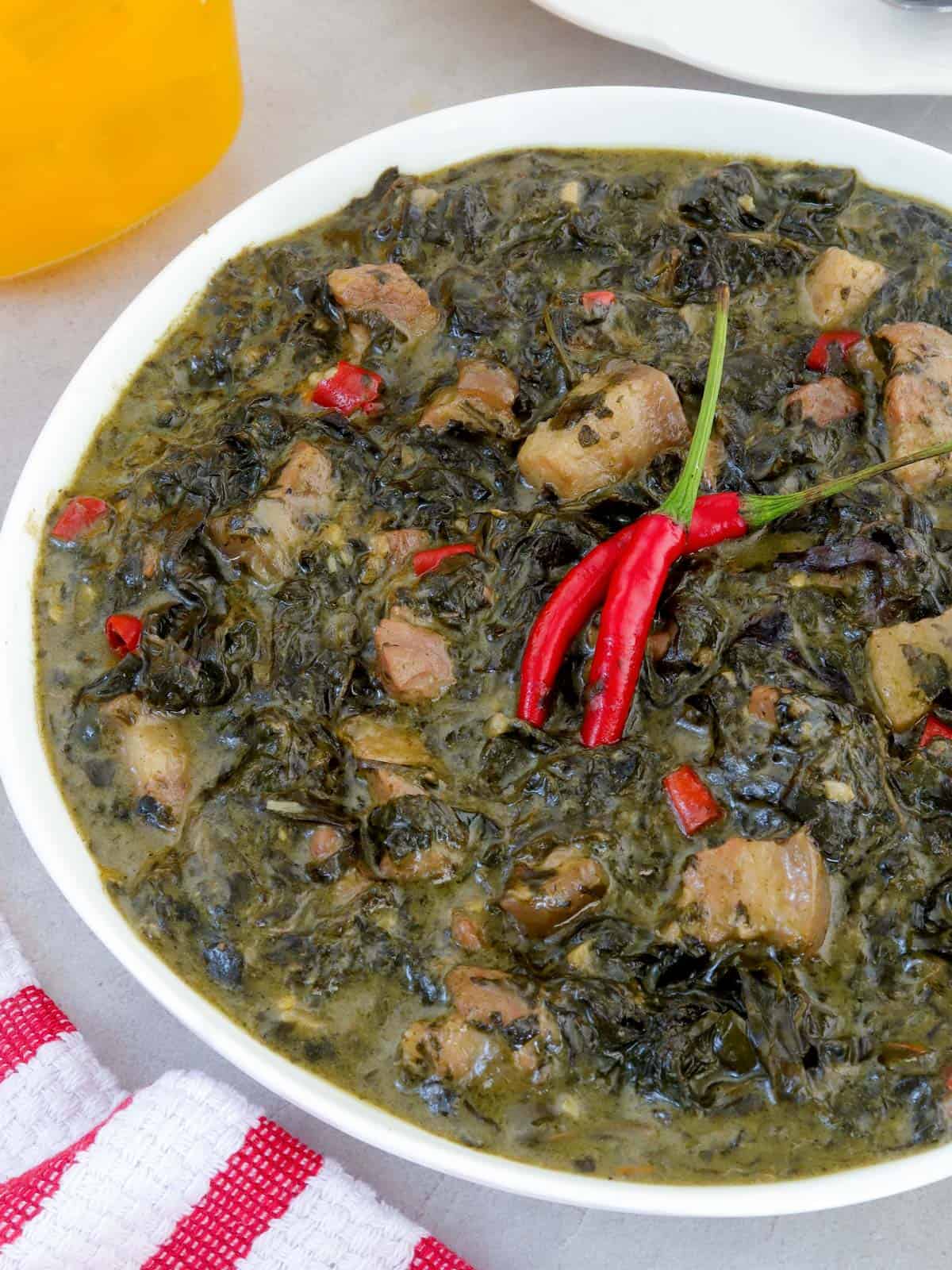
Coconut is one of the top 5 significant crops of Bicol, so it is to be expected that coconut milk is a prominent ingredient in this region's cuisine. Like adobo sa gata, Bicol Express, and gising-gising, laing is another classic example of Bicolano's love affair with piquant chili peppers and their wide use of gata in cooking.
And I have to say, this beautiful flavor combination is my favorite, too. Can't beat the rich taste of meat or vegetables stewed in rich, creamy coconut sauce and copious amounts of chilies in my book. I wax poetic about ginataang talong every chance I get and seriously think it's one of our best recipes here on the blog.
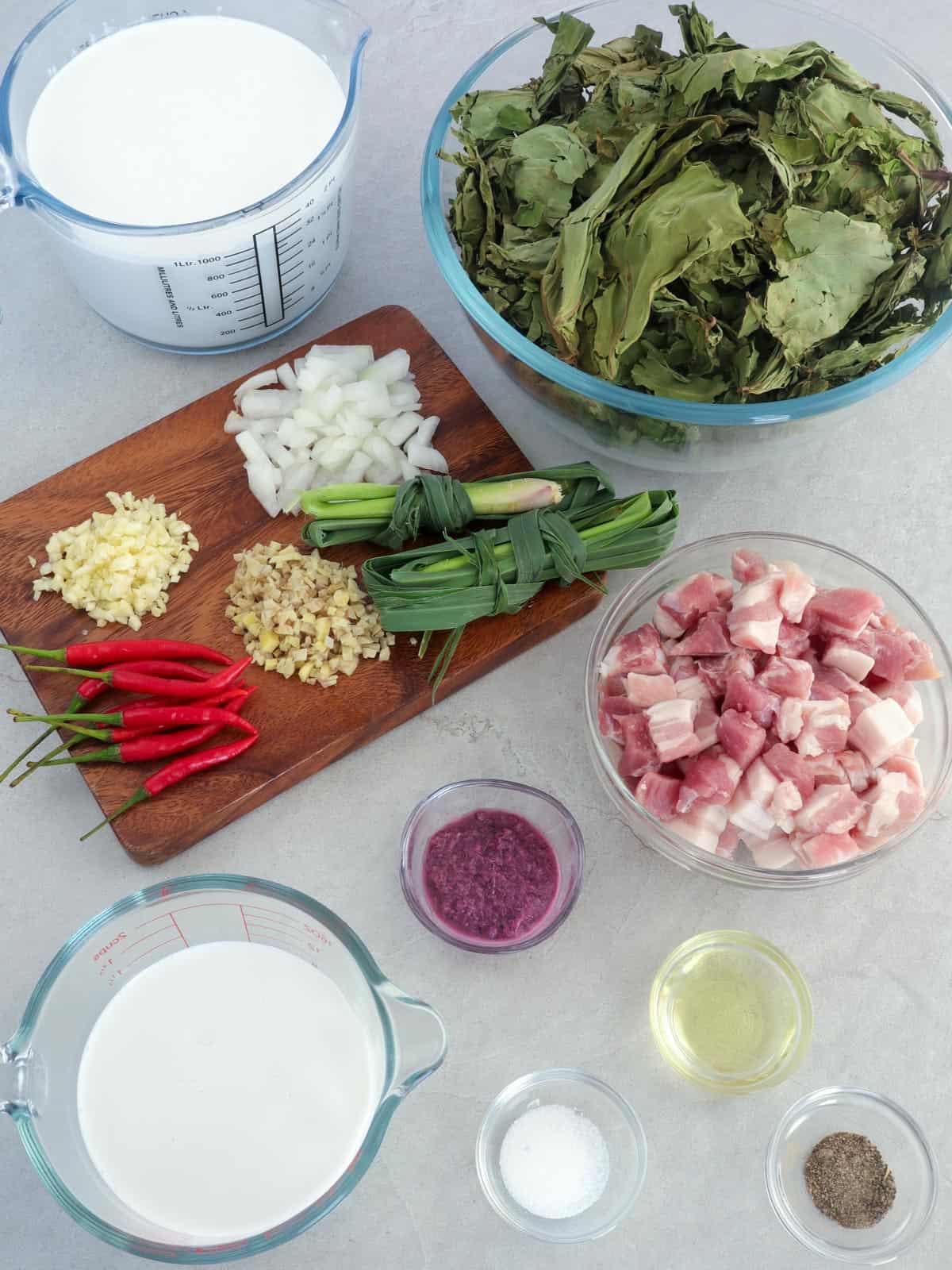
What is Laing
Laing is a Filipino delicacy made of shredded or whole taro leaves, coconut milk, meat or seafood, chili peppers, and various aromatics, including onions, garlic, ginger, and lemongrass (tanglad).
Although said to have originated from Bicol, the original dish is primarily similar in ingredients but different in cooking preparation from the version the rest of the country is familiar with. Authentic Bicolano laing, commonly known in the region as pinangat na gabi, does not use shredded taro leaves; instead, whole leaves are wrapped around the pre-cooked meat or seafood mixture to form pouches and then steamed in coconut milk until fork-tender.
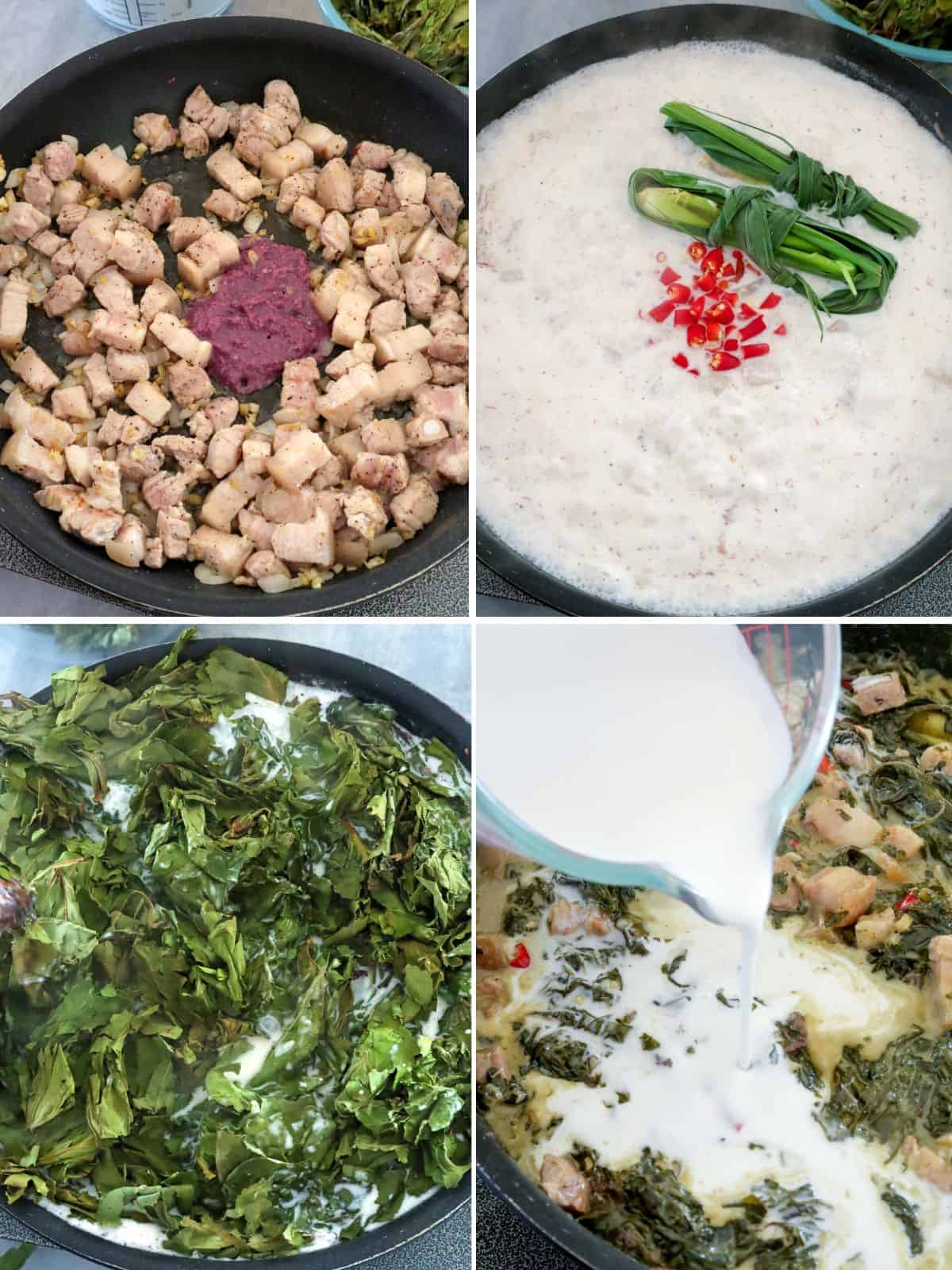
Why do Taro Leaves Cause Itchiness
Gabi leaves should be washed thoroughly and cooked adequately as they are high in calcium oxalate, which can cause an "itchy" or burning sensation in the mouth. Drying the leaves under the sun before cooking is said to lessen the amount of these crystals.
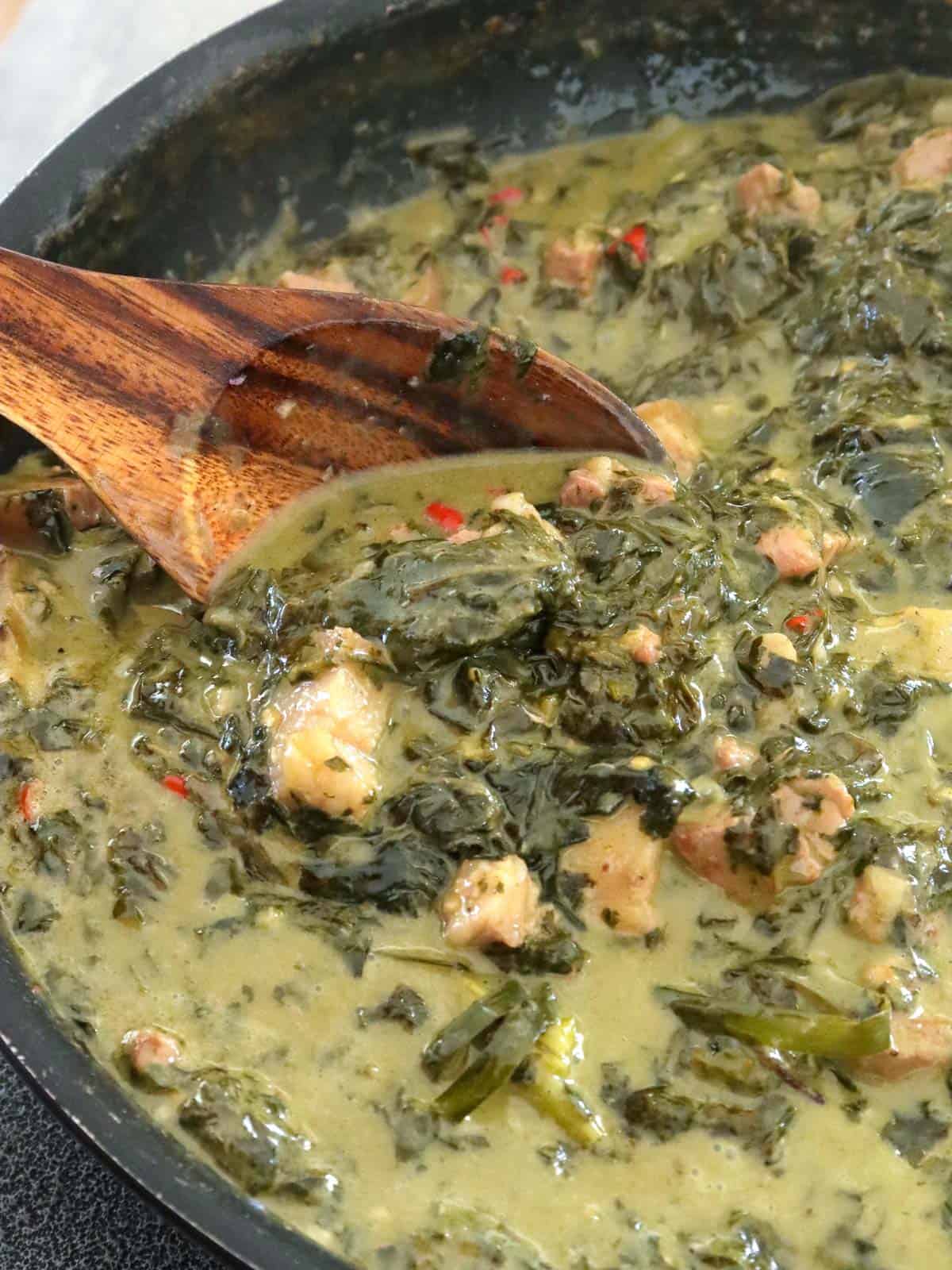
Cooking tips
- As other types of leaves might have gotten mixed in during the drying process, check the dried gabi packet for any stray leaves and discard them.
- Two ounces might not look like a lot, but the dried leaves will absorb much of the liquid and expand during cooking.
- According to old-school wisdom, it's also best not to stir the taro leaves in the pot during the first 15 to 20 minutes to prevent the irritating sensation. Gently push the leaves down into the coconut milk to soften them.
- Cook the coconut sauce at a gentle simmer, and do not boil lest it curdles or separates.
- Adjust the spiciness by decreasing the number of chili peppers or scraping off the seeds and veins of the chilies before chopping.
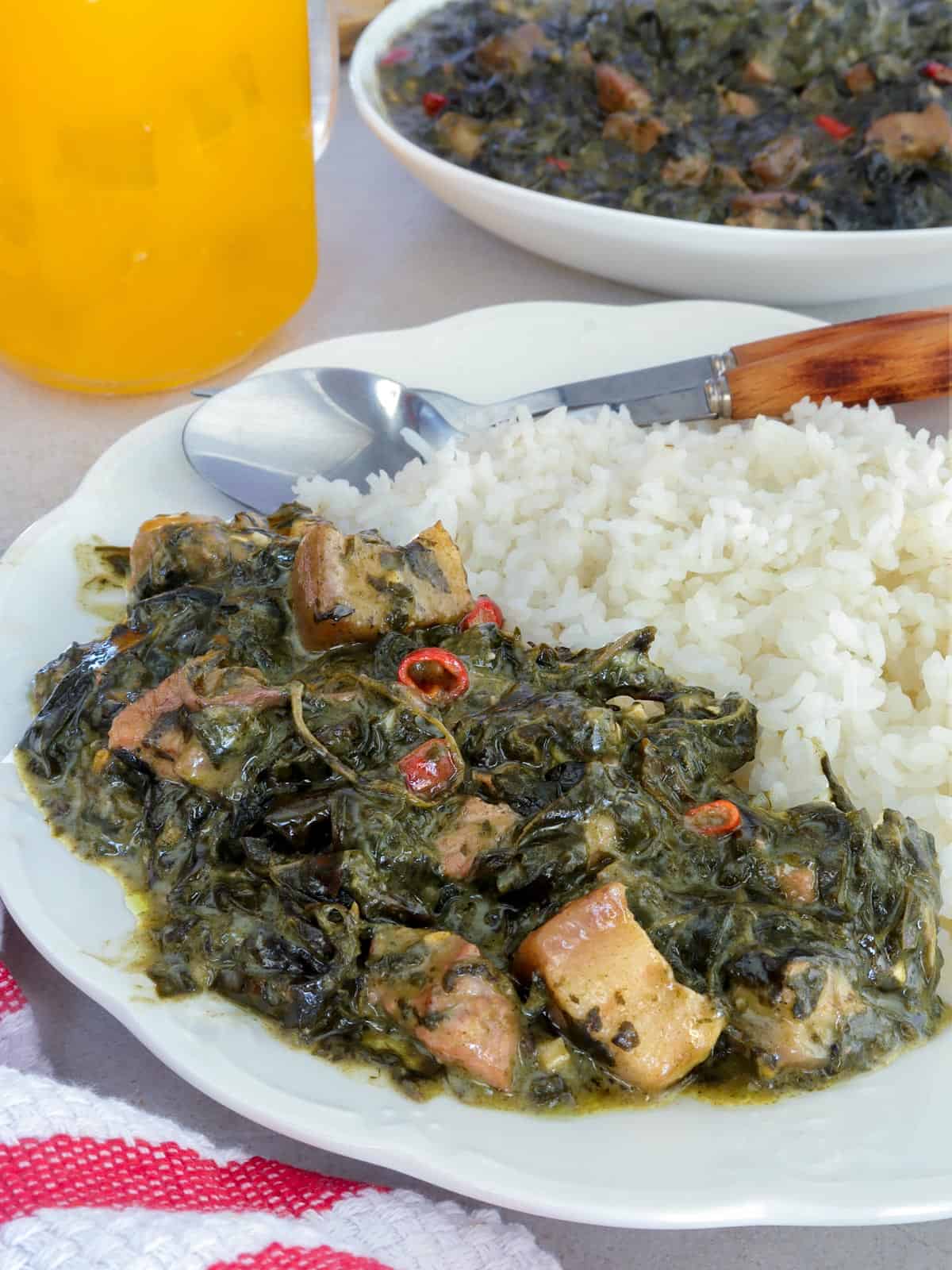
How to serve and store
- Laing can be enjoyed as a main or side dish for lunch or dinner. For a hearty, flavor-packed meal, serve with steamed rice and your favorite grilled or fried fish.
- Store in airtight containers and refrigerate for up to 3 days or freeze for up to 2 months. Do not keep it outside of refrigeration for too long, as it contains coconut milk and will spoil quickly, especially in warmer weather.
- Reheat in a pan on low heat to 165 F, stirring well.
More ginataan recipes
Ingredients
- 2 ounces dried gabi leaves
- 2 lemongrass stalks
- 1 tablespoon canola oil
- 1 onion, peeled and chopped
- 4 cloves garlic, peeled and minced
- 1 thumb-size ginger, peeled and minced
- 1 pound pork belly, diced
- pepper to taste
- 1 tablespoon shrimp paste
- 4 cups coconut milk
- 8 Thai chili peppers, chopped
- 1 cup coconut cream
- salt to taste
Instructions
- Go through the dried leaves, and shred into pieces. Inspect for any other stray leaves accidentally mixed in during the drying process and discard.
- Remove and discard the dark green layers of the lemongrass until you get to the lighter green part. Using the back of a knife, pound ends of stalks to release flavor and then chop.
- In a wide pan over medium heat, heat oil. Add onions, garlic, and ginger and cook, stirring occasionally, until softened and aromatic.
- Add pork and cook until lightly browned. Season with pepper to taste.
- Add shrimp paste and cook, stirring occasionally, for about 1 to 2 minutes.
- Add coconut milk and bring to a simmer.
- Add lemongrass and chili peppers.
- Add gabi leaves and with the spoon, push down into the liquid until moistened. Do not stir for the first 15 to 20 minutes.
- Lower heat, cover, and cook for about 25 to 30 minutes or until pork is fully cooked and leaves have softened.
- Add coconut cream and continue to cook for about 10 to 15 minutes or until almost dry and begins to render fat.
- Season with salt to taste. Serve hot.
Notes
- As other types of leaves might have gotten mixed in during the drying process, check the dried gabi packet for any stray leaves and discard them.
- Two ounces might not look like a lot, but the dried leaves will absorb much of the liquid and expand during cooking.
- According to old-school wisdom, it's also best not to stir the taro leaves in the pot during the first 15 to 20 minutes to prevent the irritating sensation. Gently push the leaves down into the coconut milk to soften them.
- Cook the coconut sauce at a gentle simmer, and do not boil lest it curdles or separates.
- Adjust the spiciness by decreasing the number of chili peppers or scraping off the seeds and veins of the chilies before chopping.
Video

Nutrition Information
“This website provides approximate nutrition information for convenience and as a courtesy only. Nutrition data is gathered primarily from the USDA Food Composition Database, whenever available, or otherwise other online calculators.”

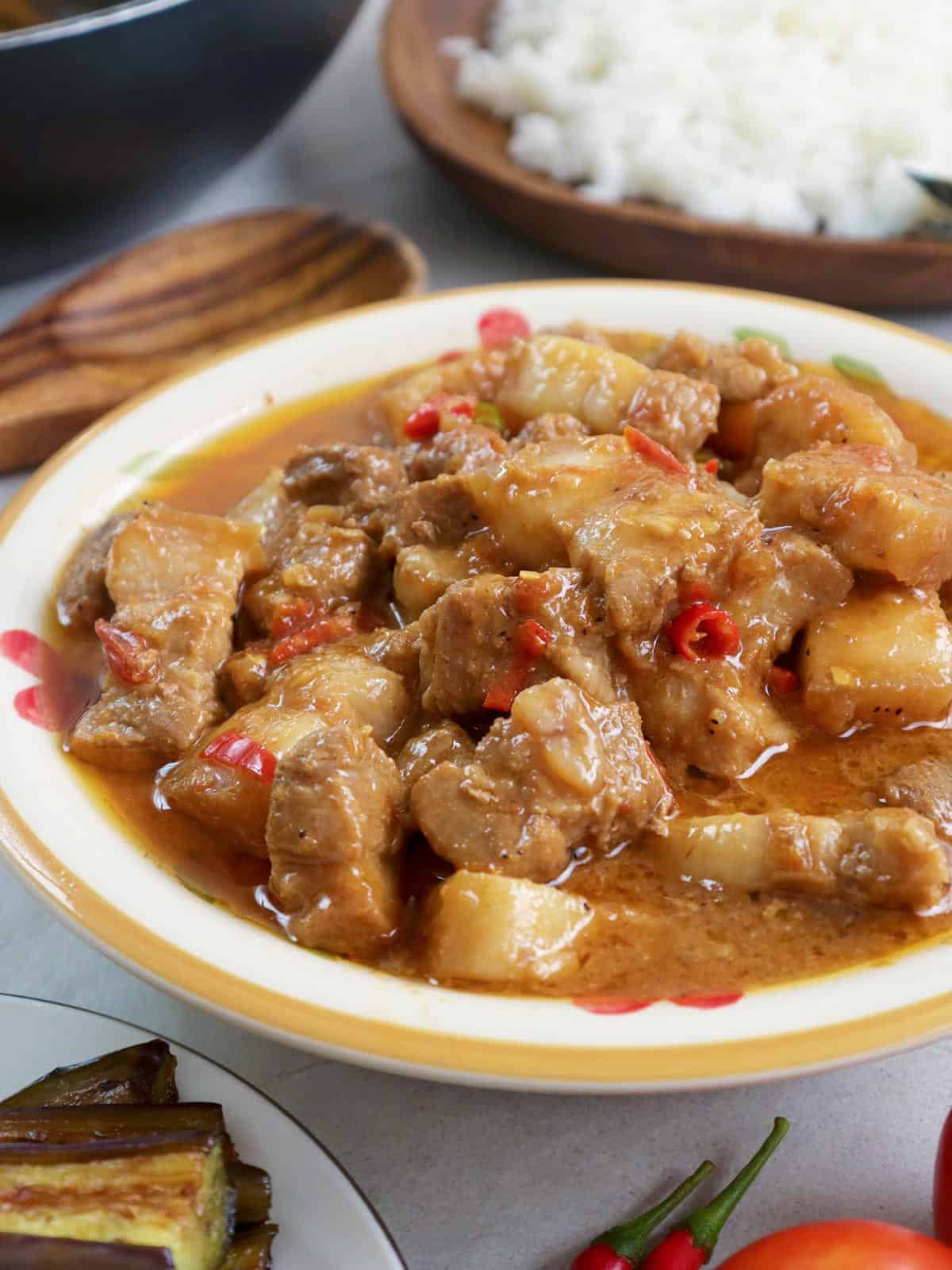
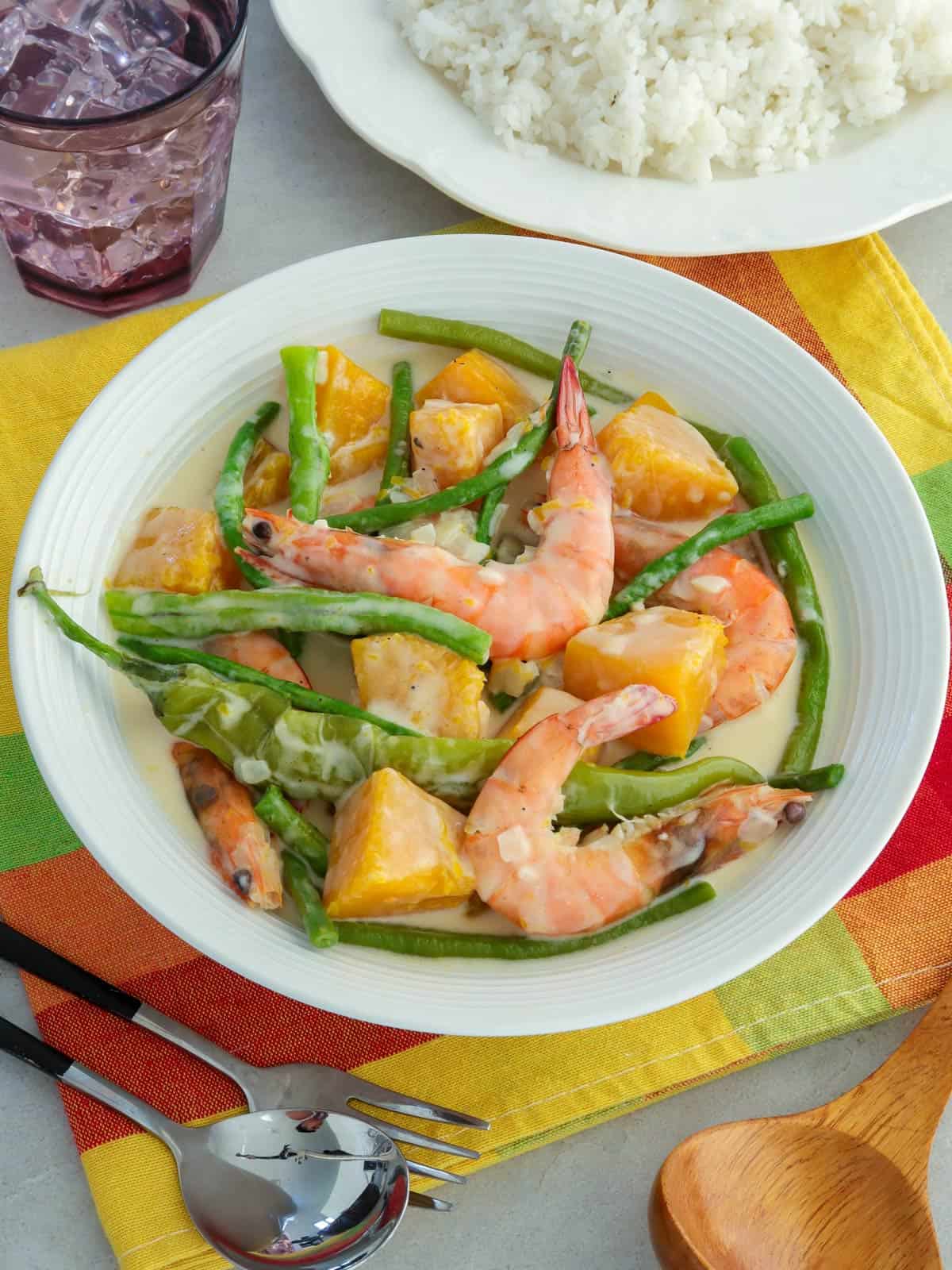
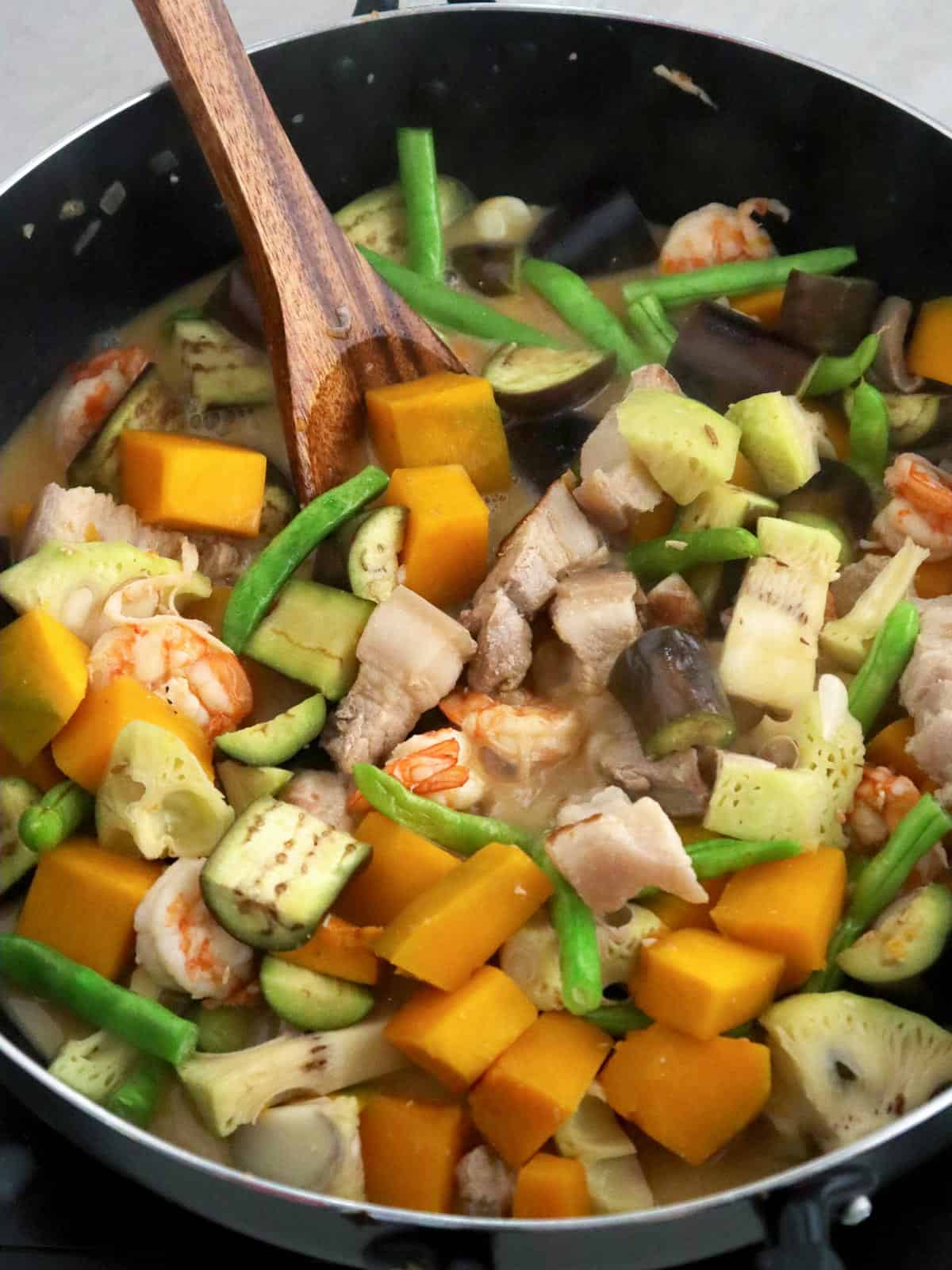
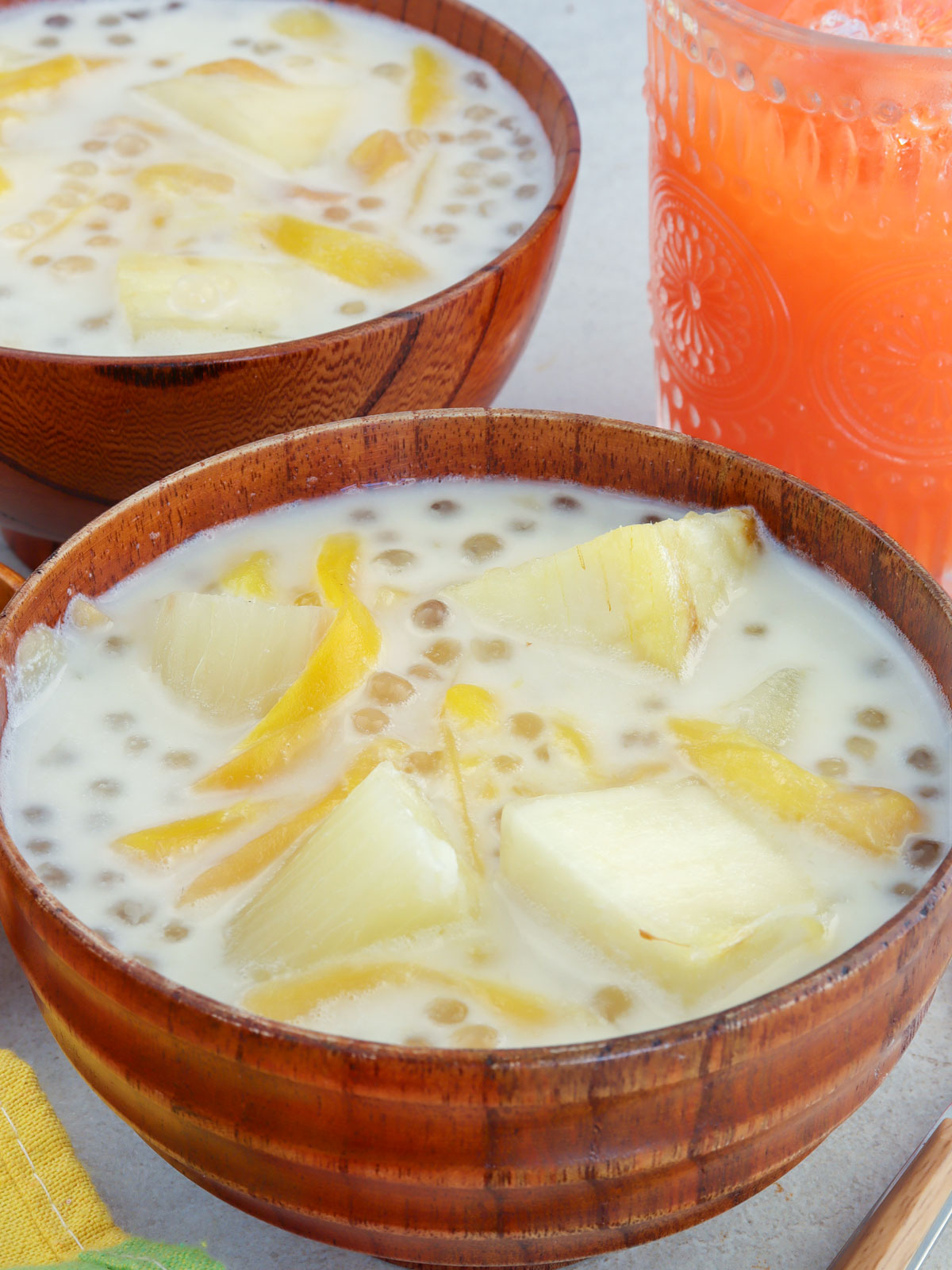
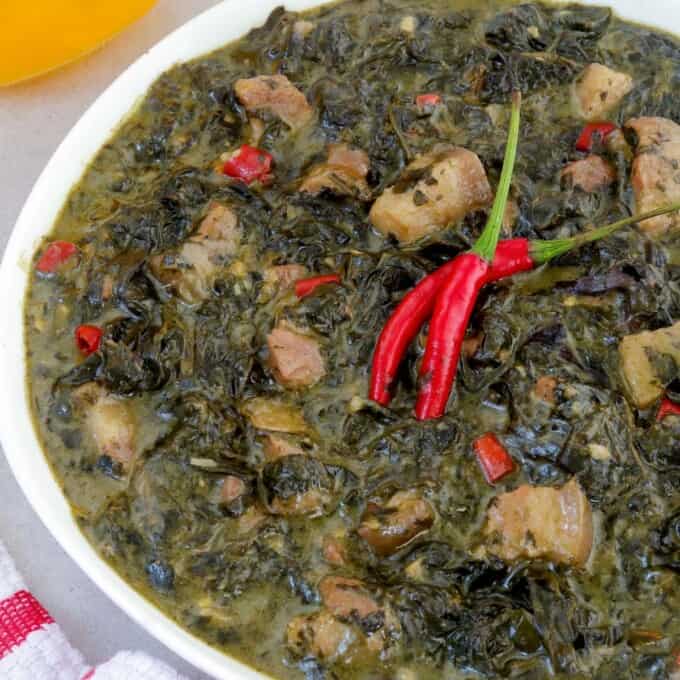
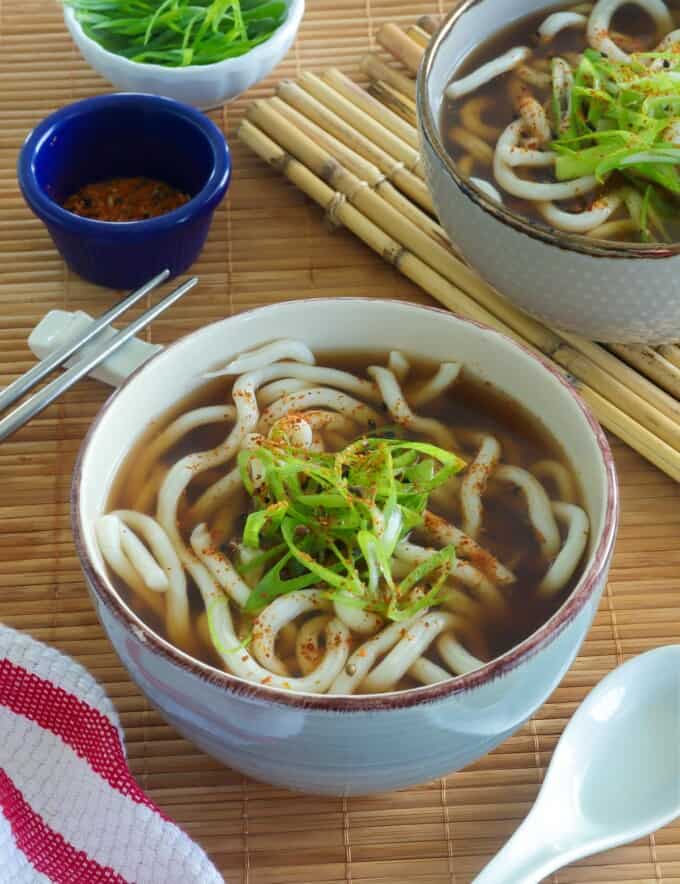

Allison Sayajon says
Hi. I followed the recipe but i dont know what i did wrong. My family liked it cuz it tasted good but there was too little taro which was a little disappointing. We love the taro leaves! 😊 The 2 ounces or 1/4 cup dried taro leaves seemed not enough. Is it possible that I can add more leaves to the left over? There's still a lot left cuz it was soupy. Thank you.
Felina Concepcion says
Despite low simmer while cooking taro leaves and stems, how come I did not achieve the softened texture of the taro leaves and stem.... even simmering for more than and hour... just wondering. I added water initially with two cans of coco milk... is that too much early on???
The irritating sensation was there and simmering longer did help ... this is my first try Ms. Lalaine...
Michael says
Mis kona c laing
Andrea says
I used to cook Laing with coconut milk. But my doctor told me to avoid cooking dishes with coconut milk because of my bad cholesterol is elevated. What can you substitute for coconut milk? I really miss cooking Laing. Thank you.
Melanie De Leon says
Can I use lemongrass powder in place of stalks? If yes, how many tablespoons? Thanks in advance : )
Xai says
Manyaman! Tastes like my grandma's! I'm Kapampangan too, and I'm so happy to have found your blog because I'm able to keep creating the foods I grew up with. Could always ask my mom or my aunties... but it's a lot easier to follow a recipe with measurements haha
Elena agana says
I try it all to cook I'll taste if it's good taste
Elena agana says
I try it all to cook
gracia maglikian says
hi mam good morning here in.hk.. i was just wondering if its ok not to use bagoong for laing coz my boss doesnt like bagoong but she love laing... is it.possible?tnx in advance for.the reply...
Lalaine Manalo says
Yes, you can just use fish sauce or just salt to season the dish.
Mila says
What brand of dried leaves you used? Thanks
Olivia C. Majid says
Cooked Laing yesterday but I used salted boneless bacalao instead. Got the recipe from a Bicolano Cookbook. Also I buy the fresh Gabi leaves & air dry it for 3 days then shred it. I never tried it with the dried bought ones, maybe I should give your recipe a try not with pork though because my husband loves it but he is Muslim & does not eat pork. I’ll stay with the dried salted bacalao .
Rosemarie Infante Calica says
I love to learn more of your recipe
Cecile says
Delicious laing recipe.thank you ma'am lalaine.
Lalaine Manalo says
You're welcome. Glad you liked it 🙂
Nuni says
Hi,
Is there other type of meat that I can use apart from pork?
rene alcid says
Hello Lalaine,
Can i use frozen taro leaves? i got them from a relative coming back from the P.I.and don't know what to do with it.Sayang naman itapon so it's currently residing in my freezer.
Salamat,